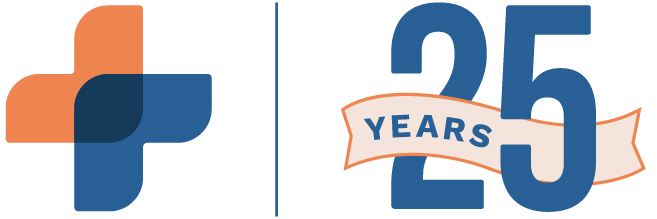When making a medical software switch or starting a new healthcare organization, one of the biggest decisions will be your software. Usually, software that stores and manages protected patient health information, financial data, and more will generally fall into two categories: server-based and cloud-based. Understanding the differences and advantages of them both is essential for your business.
With an in-house server for your healthcare software, all data is stored and managed on your organization’s premises via local computer servers. With this system, all setup, maintenance, updates, and security are managed by the user or an information technology team. Cloud-based healthcare software systems store data on secure external servers, accessible via an internet connection (i.e. “the cloud”). With this option, a dedicated IT team monitors maintenance security, and updates are conducted regularly and automatically for the user. Software with cloud-based servers can be accessed remotely, and data is stored virtually with high-level encryption.
Pros and Cons of Cloud Servers vs. In-House Servers
Data Preservation and Security
On-site data storage offers practices more control and responsibility. Your practice should have dedicated IT staff to prevent data loss and downtime. Going with an in-house server for your medical software leaves your organization responsible for:
- Creating a business continuity plan in case of data corruption, server downtime, IT maintenance, and natural disasters that may incur data losses
- Investment in server hardware and IT infrastructure
- Identifying, creating, and securing the server room
- Controlling who enters the space (i.e. miscellaneous items such as brooms, ladders, or equipment cannot be stored here)
- Having a secure access policy in place (key or code)
Cloud-based data storage offers practices a secure hands-off approach to their software. With strict information security policies like SOC-2, Type II certifications and continuous software and server updates, these connected data centers are always kept secure. Vendors are responsible for 24/7 monitoring, and cloud computing makes backup and data restoration easier. In the event of a natural disaster, data is safe in the cloud, and remains accessible through any internet-enabled device. Patients increasingly require Telemedicine/Telehealth care from providers, and cloud-based accessibility makes it easier to run your business from anywhere.
Cost
For a five-doctor practice, IQVIA reports that a server-based system would cost over $200,000 for the first year. Based on the average cost of cloud-based systems and the lack of hardware and infrastructure required, the same five-doctor practice would spend between $1,000 and $10,000 for the first year depending on the vendor.
Additionally, an on-site server requires server rooms to store hardware and dedicated IT and security staff. On-site data centers require hardware setup, software patching, and other time-consuming IT management chores. In other words, a lot of time is spent guarding and maintaining data centers instead of focusing on more important business goals. This can be both costly and inefficient.
Cloud-based storage minimizes IT staff and allows your business to focus on patient care. Without costly in-house server rooms, deployment is quicker and easier, maintenance costs are negligible, and data is just as secure with updated, strict security protocols, encryption, and data redundancy.
Top 3 Benefits of Cloud-Based Software for Patients and Providers
Although cloud computing can be a big shift, there are significant benefits for both patients and providers. Here are the top reasons organizations are turning to cloud-based storage and software:
- Better Informed at a Quicker Pace
According to the National Center for Biotechnology Information, longer life expectancies mean more chronic conditions, and electronic records make it easier for providers to track changes over time wherever they provide care. This can improve chronic disease management, prevention, and screening for patients. Recently, more providers and caregivers have been on the move:
- telehealth usage is up 154% in 2020
- travel nursing has increased by almost 70% in 2021,
- almost twice as many providers used remote patient monitoring in 2020 than in 2018 (even more in certain specialties)
With an increase in traveling, telehealth care, it’s critical that providers still have access to patient records despite their geographic location. Cloud-based servers allow for multi-location flexibility so health organizations providers can access patient health information and business data at the point-of-care or from remote locations.
- Fewer Interruptions and Data Losses
If not maintained regularly, data servers can (and will) fail. Failed in-house servers come with costly replacements, significant downtime, and data losses. This interruption in workflow comes at a high cost to healthcare organizations and patients by throwing off timelines, and increasing care delays and reimbursement time. At worst, it also means the loss of valuable patient information.
Cloud-based software is meticulously maintained, constantly updated, and comes with safeguards to ensure top-of-the-line protection against data breaches. For a busy medical practice, cloud-based solutions can provide higher uptimes and data redundancy so recovery is easy and losses are rare, no matter the disaster situation.
- Accessibility for All Patients
With an increase in natural disasters and pandemics, preparing for the worst can no longer be placed on the backburner. A natural disaster or pandemic can prevent users, IT personnel and staff, and/or providers from accessing a hospital or health system (with their server-based system running on-site). Additionally, rural health clinics are often left at a disadvantage with fewer locations and expansive areas for patient care. With a cloud-based system, your patient data is secure and accessible as long as internet access is available, no matter the conditions.
With increased telehealth usage, higher standards of security and care, increases in patient accessibility, and tighter practice budgets, your healthcare software should be able to keep up. RXNT’s integrated, cloud-based healthcare software for medical practices and health organizations includes Electronic Prescribing, Electronic Health Records with Patient Portal, and Practice Management with Medical Billing and Scheduling. Is your current system meeting your needs? Schedule a demonstration to find out.





